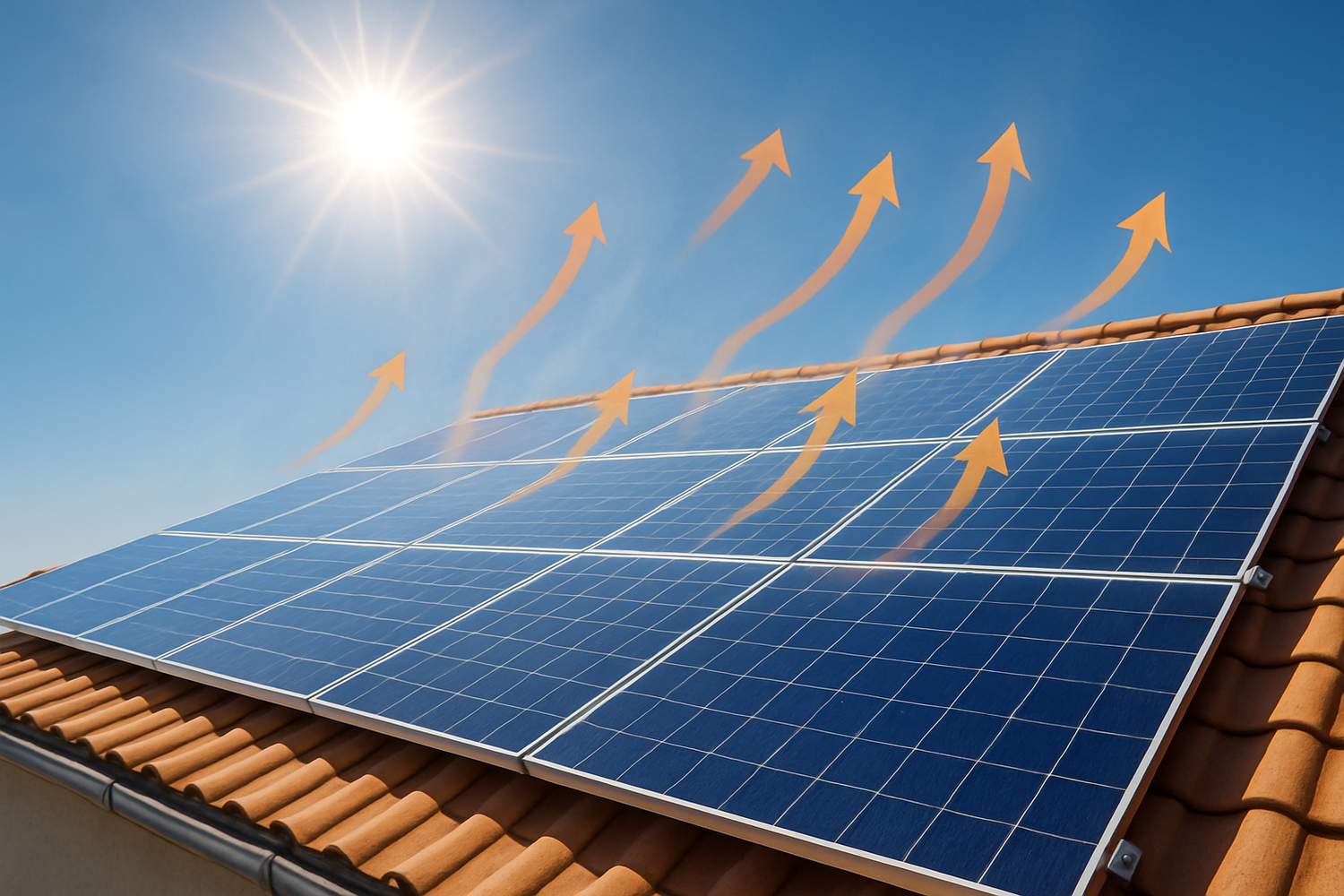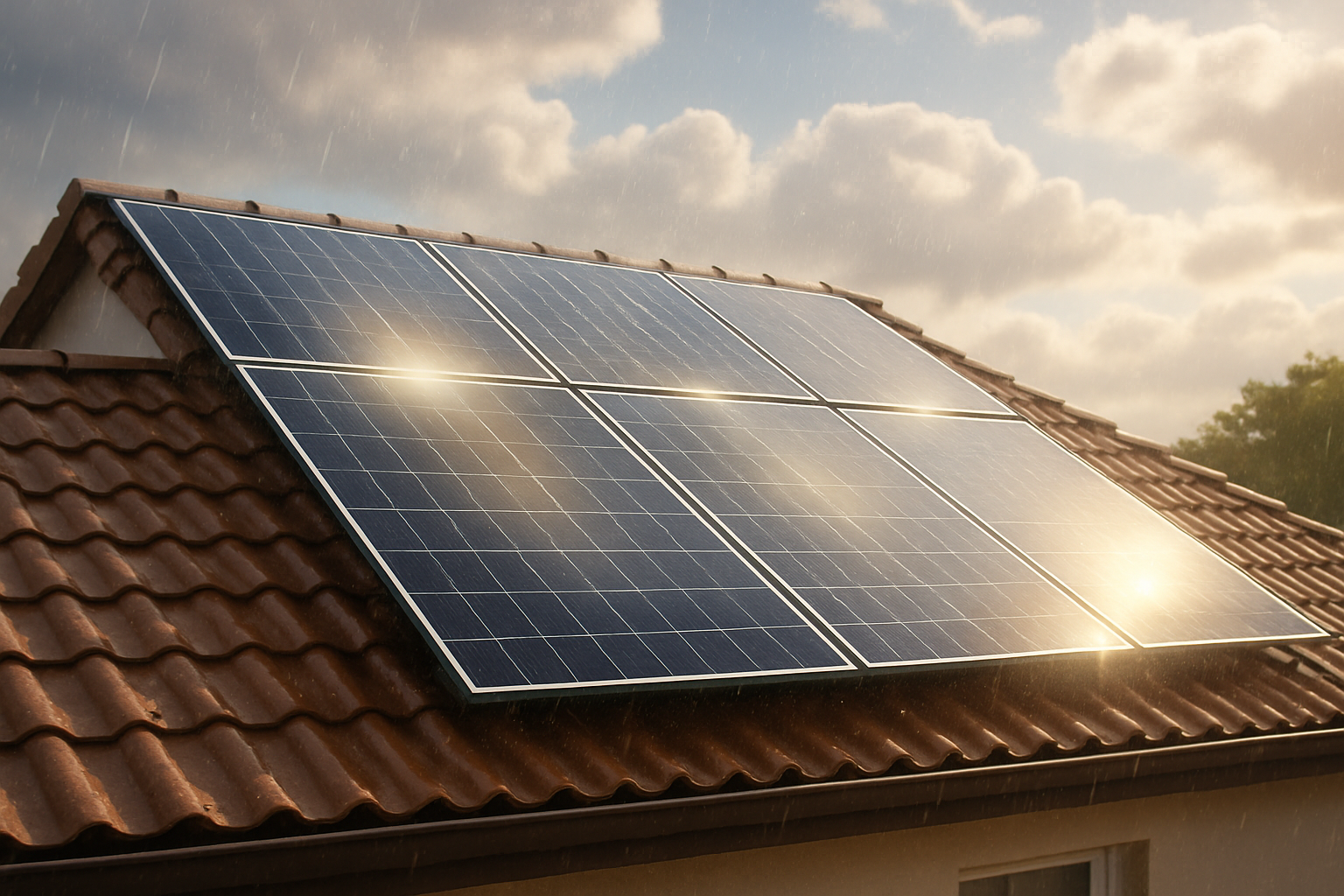Solar energy offers a sustainable path to power your home or business. While solar panels thrive on sunlight, extreme heat can present a challenge to their performance. Understanding how high temperatures influence photovoltaic (PV) systems is key to maximizing energy production, especially during scorching summer months. This article outlines effective strategies to enhance your solar output when the mercury rises.

Understanding Heat's Influence on Solar Panels
It might seem counterintuitive, but solar panels generally perform better in cooler temperatures. Their efficiency can decline as temperatures climb above 25°C (77°F), the standard test condition for rating panels. The World Economic Forum notes that hot temperatures can reduce solar panel output efficiency by 10% to 25% . This reduction happens because rising temperatures increase the electrical resistance within the solar cells, making it harder for them to convert sunlight into electricity effectively .
The Temperature Coefficient Explained
Every solar panel has a "temperature coefficient," a crucial metric indicating how much its power output decreases for each degree Celsius increase above 25°C . This coefficient is usually a negative percentage, ranging from -0.3% to -0.5% per °C for typical crystalline silicon panels . For example, a panel with a -0.4% per °C temperature coefficient will lose 4% of its efficiency for every 10°C rise above 25°C .
Consider this example:
| Panel Temperature (°C) | Temperature Difference from 25°C (°C) | Efficiency Loss (Assuming -0.4%/°C Coefficient) | Relative Power Output (%) |
|---|---|---|---|
| 25 | 0 | 0% | 100% |
| 35 | 10 | 4% | 96% |
| 45 | 20 | 8% | 92% |
| 55 | 30 | 12% | 88% |
| 65 | 40 | 16% | 84% |
As you observe, a panel operating at 65°C (149°F), which is common on a hot rooftop, could experience a significant drop in its power output .
Optimizing Panel Placement and Airflow
Strategic installation can significantly mitigate heat-related efficiency losses. Proper placement and ensuring adequate airflow are fundamental steps.
Mounting Solutions for Air Circulation
Mounting solar panels a few inches above the roof surface allows air to circulate underneath, acting as a natural cooling mechanism . A gap of 4-6 inches between the roof and panels promotes effective airflow, reducing heat buildup . Ground-mounted systems or inclined installations can also improve airflow beneath the panels, promoting heat dissipation . Choosing light-colored, reflective roofing materials can further reduce the amount of heat absorbed by the roof, which in turn helps keep the panels cooler .
Adjusting Tilt and Orientation
While facing true south (in the Northern Hemisphere) is generally ideal for annual production, in hot climates with intense sunlight, a slight eastward or westward orientation can minimize exposure to the strongest midday sun, which is also the hottest part of the day . Adjusting the tilt angle to encourage better airflow can also assist with heat dissipation .
Cleaning and Maintenance Strategies
Regular maintenance is crucial for sustaining solar panel performance, particularly in hot and dry conditions where dust and debris can accumulate rapidly.
Regular Cleaning for Efficiency
Dust, pollen, and other debris can accumulate on panel surfaces, blocking sunlight and increasing panel temperature, which further reduces efficiency . Cleaning your panels regularly, especially in dusty or dry regions, is important . Use a soft brush or a non-abrasive sponge with mild soapy water. Rinse with a garden hose to remove most dirt . It is best to clean panels early in the morning or late in the evening when they are cool, preventing thermal shock that could damage them .
Monitoring and Inspection
Consistently monitoring your system's performance helps identify sudden drops in energy production, which could signal heat-related issues or other problems . Regularly inspect panels for physical damage like cracks, discoloration, or loose connections . Ensuring your solar inverter is in a well-ventilated, shaded area also prevents overheating and maintains its performance .
Advanced Technologies and Solutions
Beyond basic maintenance, advanced technologies offer significant ways to enhance PV output in high temperatures.
Solar Tracking Systems
Solar tracking systems dynamically adjust the angle and orientation of panels to follow the sun's path throughout the day . This maximizes sunlight capture and boosts energy production significantly, often by 25% to 40% annually compared to fixed systems . Research from Solar Energy Perspectives (IEA, 2011) notes that two-axis tracking can increase and even out the production of PV over the day . While more complex, tracking systems are especially effective in regions with intense and continuous sunlight, where they can also contribute to longer system lifespan by reducing thermal stress .
Cooling Technologies for Panels
Some solar panels incorporate advanced cooling mechanisms. These include thermally conductive backsheets that dissipate heat more efficiently . For larger installations, active cooling systems using water or forced air can substantially reduce panel temperatures and improve efficiency . Concentrating photovoltaics (CPV) specifically require effective cooling, which can even allow for the cogeneration of heat and power, where the heat is captured for industrial processes or desalination .
Energy Storage Integration for Resilience
Pairing solar panels with energy storage systems offers a robust solution for managing energy during peak heat periods and achieving greater energy independence.
Benefits of Battery Storage
During heat waves, when solar panel efficiency might slightly decrease, having a reliable energy storage system allows you to store excess energy generated during cooler parts of the day or when output is higher, and then use it when production dips or demand peaks . Lithium Iron Phosphate (LiFePO4) batteries are an excellent choice for solar storage due to their high energy density, long lifespan, and safety features . They are less prone to overheating and maintain integrity across various temperatures, making them suitable for demanding environments . LiFePO4 batteries also boast high charge and discharge efficiencies, often exceeding 90%, minimizing energy loss .
Integrated Energy Solutions
Integrated home energy storage systems (ESS) combine lithium batteries, hybrid inverters, and solar panels into a single, cohesive unit . These systems allow you to optimize energy use by storing electricity during off-peak hours and using it during peak demand, reducing reliance on the grid and lowering electricity bills . For those seeking complete energy independence, off-grid solar solutions, often powered by robust lithium batteries and efficient solar inverters, provide reliable electricity for homes, farms, and remote cabins, even when the grid is unavailable . This resilience is particularly valuable during heat waves when grid stability might be tested.
Looking Ahead
Maximizing your solar panel output during heat waves involves a multi-faceted approach, combining smart installation practices, regular maintenance, and leveraging advanced technologies like tracking systems and robust energy storage. By implementing these strategies, you can ensure your solar investment continues to deliver reliable, clean energy, no matter how high the temperatures climb. Achieving energy independence is a tangible goal, and with the right approach, your solar system can perform optimally year-round.





Leave a comment
All comments are moderated before being published.
This site is protected by hCaptcha and the hCaptcha Privacy Policy and Terms of Service apply.